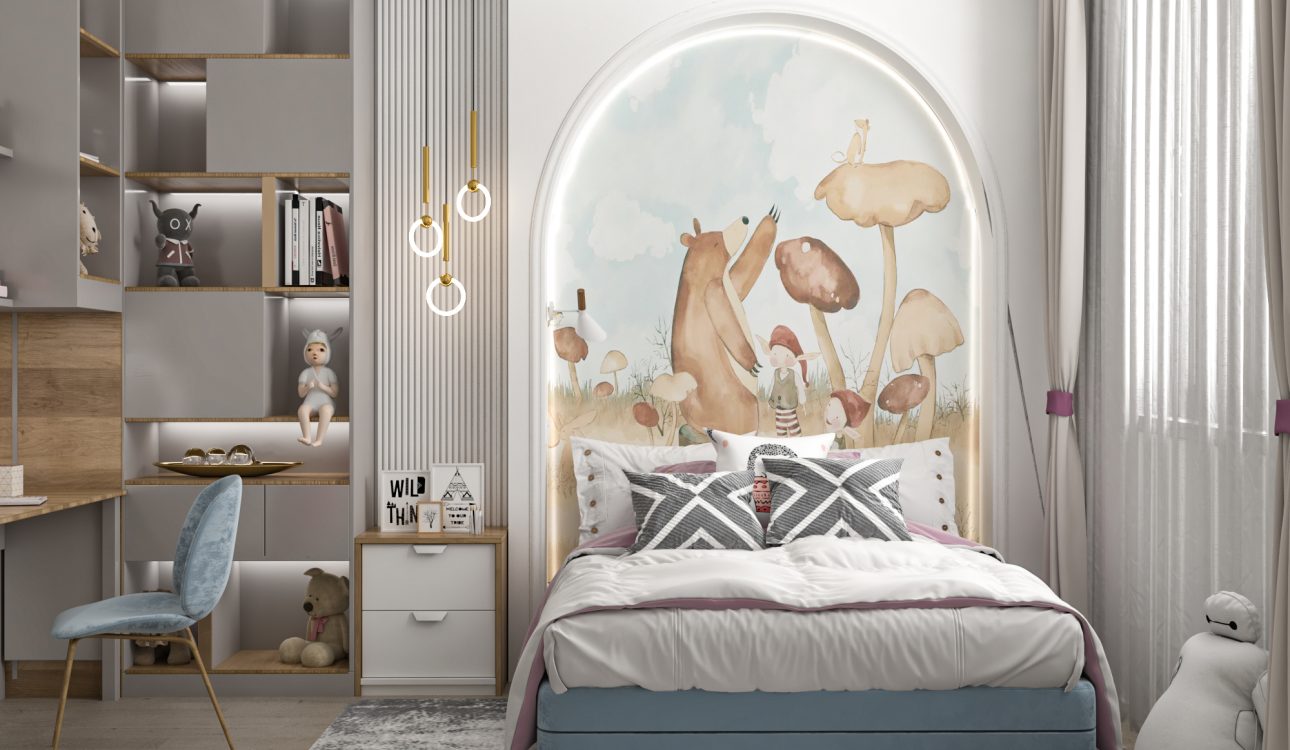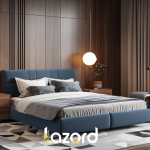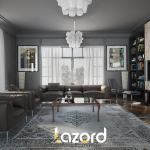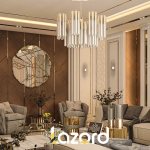The design of a room is more than just arranging furniture—it’s a blend of creativity, function, and aesthetics that together transform a blank space into a vibrant, welcoming environment. Room design influences the mood, functionality, and overall energy of your home. With thoughtful planning and clever design choices, you can create spaces that not only look stunning but also cater to your lifestyle needs. In this article, we’ll explore the key elements of the art of room design, providing you with insightful room design ideas that can inspire your next interior transformation.
1. The Purpose of the Design of the Room
Before diving into specific room design ideas, it’s essential to determine the purpose of the space. Whether it’s a cozy living room for entertaining guests, a functional home office for productivity, or a serene bedroom for relaxation, each room has a unique role to fulfill. Identifying the primary use will guide your design choices, ensuring that the room’s layout, furniture, and décor align with its function.
Key considerations when determining a room’s purpose:
- Who will primarily use the room?
- What activities will take place in the space?
- How much natural light and ventilation does the room have?
- What mood or ambiance are you aiming to create?
By clearly defining the purpose, you lay the foundation for an effective and harmonious room design.
2. Mastering Layout and Space Planning
A well-executed layout is the backbone of any great room design. Space planning ensures that all elements of the room work together seamlessly, maximizing the room’s functionality while maintaining an aesthetically pleasing flow. Whether your space is large or compact, careful planning can help you make the most of the available area.
Effective space planning tips:
- Zone the room by grouping furniture into different areas based on function (e.g., seating areas, workspaces, or dining spots).
- Ensure there’s enough room for traffic flow, allowing people to move easily around the space without bumping into furniture.
- Consider scale and proportion when selecting furniture. Large furniture can overwhelm a small room, while tiny pieces can get lost in larger spaces.
Designing a functional layout takes time and precision, but when done well, it ensures that the room is both practical and inviting.
you can read more about: house decorating ideas: house decor ideas
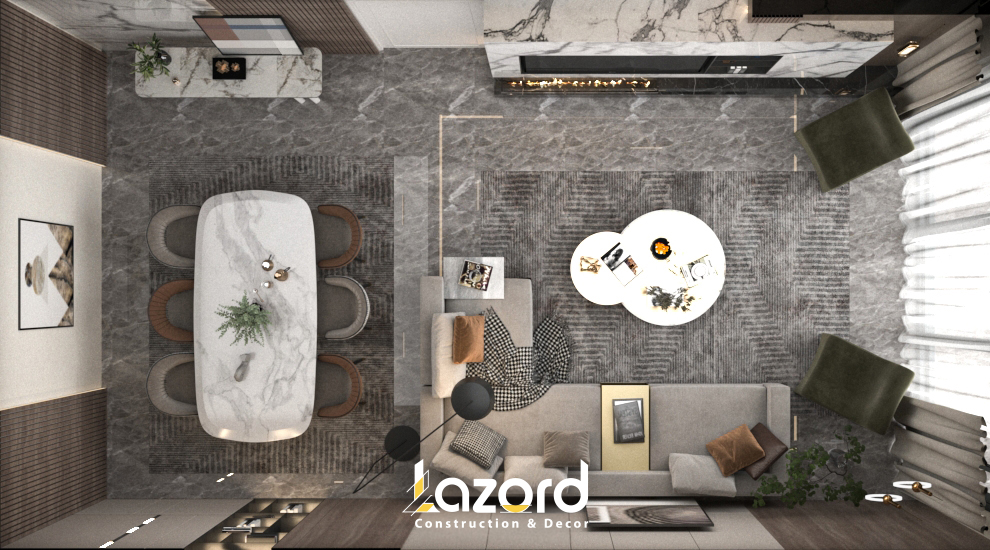
3. Choosing the Right Color Palette
Color has a profound impact on the mood and feel of a room. Whether you want to create a calm, serene retreat or a lively, energetic space, the color palette you choose will play a crucial role. The right combination of colors can enhance the overall design while also reflecting your personal style.
Ideas for selecting a color palette:
- For a tranquil and balanced atmosphere, opt for neutral colors such as whites, grays, and beiges. These shades provide a versatile backdrop that can be accented with bolder hues.
- If you want to infuse energy and vibrancy, consider accent walls or pops of bold color like deep blues, rich greens, or burnt oranges.
- Monochromatic schemes (using variations of one color) can create a harmonious and cohesive look.
- Incorporate complementary colors to add contrast and visual interest while maintaining a balanced design.
Remember to balance bold colors with softer shades to prevent overwhelming the space, ensuring a harmonious and appealing environment.
4. The Power of Texture and Materials
Texture is an often-overlooked but vital element in room design. Combining different textures adds depth, warmth, and interest to your space, making it feel layered and cohesive. When selecting materials and textures for your room, think beyond the visual appeal and consider how they’ll feel and interact with the other design elements.
Ways to incorporate texture into your room design:
- Use soft textiles like wool rugs, velvet pillows, or linen drapes to create a cozy atmosphere.
- Introduce natural materials such as wood, stone, or rattan for added warmth and an organic feel.
- Mix smooth surfaces like glass or metal with rougher textures such as brick or exposed wood beams to create contrast.
By thoughtfully layering different textures, you can create a space that feels complete and inviting, engaging both the senses of sight and touch.
5. Selecting the Perfect Lighting
Lighting is an essential factor in room design that can drastically affect how a room looks and feels. The right lighting can enhance the ambiance, highlight architectural features, and make the space more functional. To achieve a balanced and well-lit room, consider multiple layers of lighting, each serving a specific purpose.
Types of lighting to consider:
- Ambient lighting provides overall illumination for the room, usually from ceiling lights or chandeliers.
- Task lighting is more focused, perfect for specific activities such as reading, cooking, or working, and includes desk lamps or under-cabinet lighting.
- Accent lighting is used to highlight certain features like artwork, architectural details, or plants and can include spotlights or wall sconces.
Choosing the right combination of lighting will enhance the atmosphere of the room, making it functional while also adding to its aesthetic appeal.
you can read more about: Design for Home: best design tools for home renovation
6. Furniture Selection and Arrangement
Furniture plays a pivotal role in room design, not just for its practicality but for its ability to define the style and flow of the space. The arrangement of furniture influences how you navigate through the room and how cozy or spacious the area feels.
Important furniture arrangement tips:
- Create conversation areas by grouping seating furniture close together in living rooms, encouraging interaction.
- Consider scale when placing furniture—ensure that larger rooms have furniture that fills the space adequately, while smaller rooms should avoid bulky items.
- Avoid pushing all furniture against the walls; instead, float pieces toward the center of the room to create intimacy and better flow.
By thoughtfully selecting and arranging furniture, you create both comfort and style, contributing to a room design that feels complete.
7. Add Personality with Artwork and Décor
Art and décor add the final touches to any room, providing opportunities to inject your personality and make the space uniquely yours. The right combination of accessories can tie together all the design elements and elevate the entire room.
Ideas for decorating with art and accessories:
- Gallery walls featuring framed artwork, family photos, or mirrors can become a striking focal point.
- Use statement art pieces like large paintings or sculptures to anchor a room and make a bold statement.
- Incorporate personal items like travel souvenirs, vintage finds, or handmade crafts to add a personal touch.
Art and décor are where you can express your individuality and add character to your room design, making it feel truly like home.
8. Integrating Storage Solutions
A well-designed room isn’t just beautiful—it’s also functional. Clutter can detract from even the most carefully designed space, so incorporating smart storage solutions is essential for maintaining a clean and organized look.
Clever storage ideas for room design:
- Use built-in shelving or cabinetry to store items without taking up additional floor space.
- Incorporate multi-functional furniture like ottomans with hidden storage or beds with drawers underneath.
- Utilize vertical storage options like tall bookshelves or wall-mounted organizers to make the most of your available space.
By incorporating smart storage solutions, you ensure that your room remains stylish and clutter-free, enhancing both form and function.
9. Create a Harmonious Balance with Accessories
Accessories like throw pillows, vases, and plants might seem like minor details, but they play a significant role in completing the overall design of a room. When chosen and placed thoughtfully, they can bring balance and cohesion to your space, tying together all the other design elements.
Tips for accessorizing:
- Layer accessories like throw pillows and blankets to add texture and comfort to sofas and beds.
- Arrange decorative items like vases, candles, or books on coffee tables, shelves, or sideboards to add interest.
- Use plants and greenery to bring life and freshness to the room, adding a natural element to your décor.
By thoughtfully layering accessories, you can add the finishing touches that complete the design and make the room feel polished and inviting.
In conclusion, mastering the art of room design involves balancing function with beauty, creating spaces that are both practical and visually stunning. By focusing on layout, color, lighting, furniture selection, and the thoughtful use of textures and accessories, you can transform any room into a work of art. Whether you’re designing a new room or refreshing an old one, these room design ideas will help you create a space that reflects your style and enhances your daily life.

